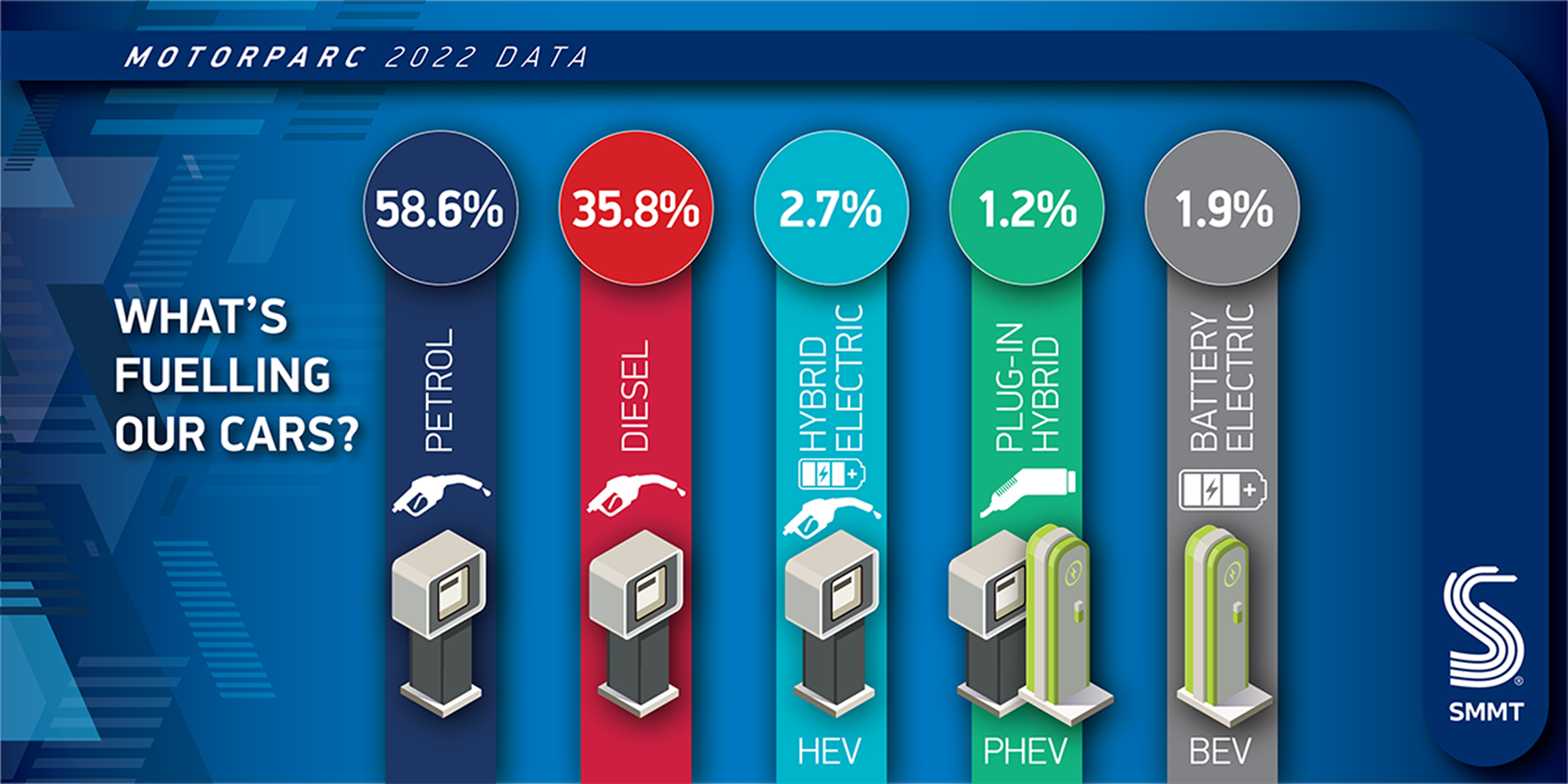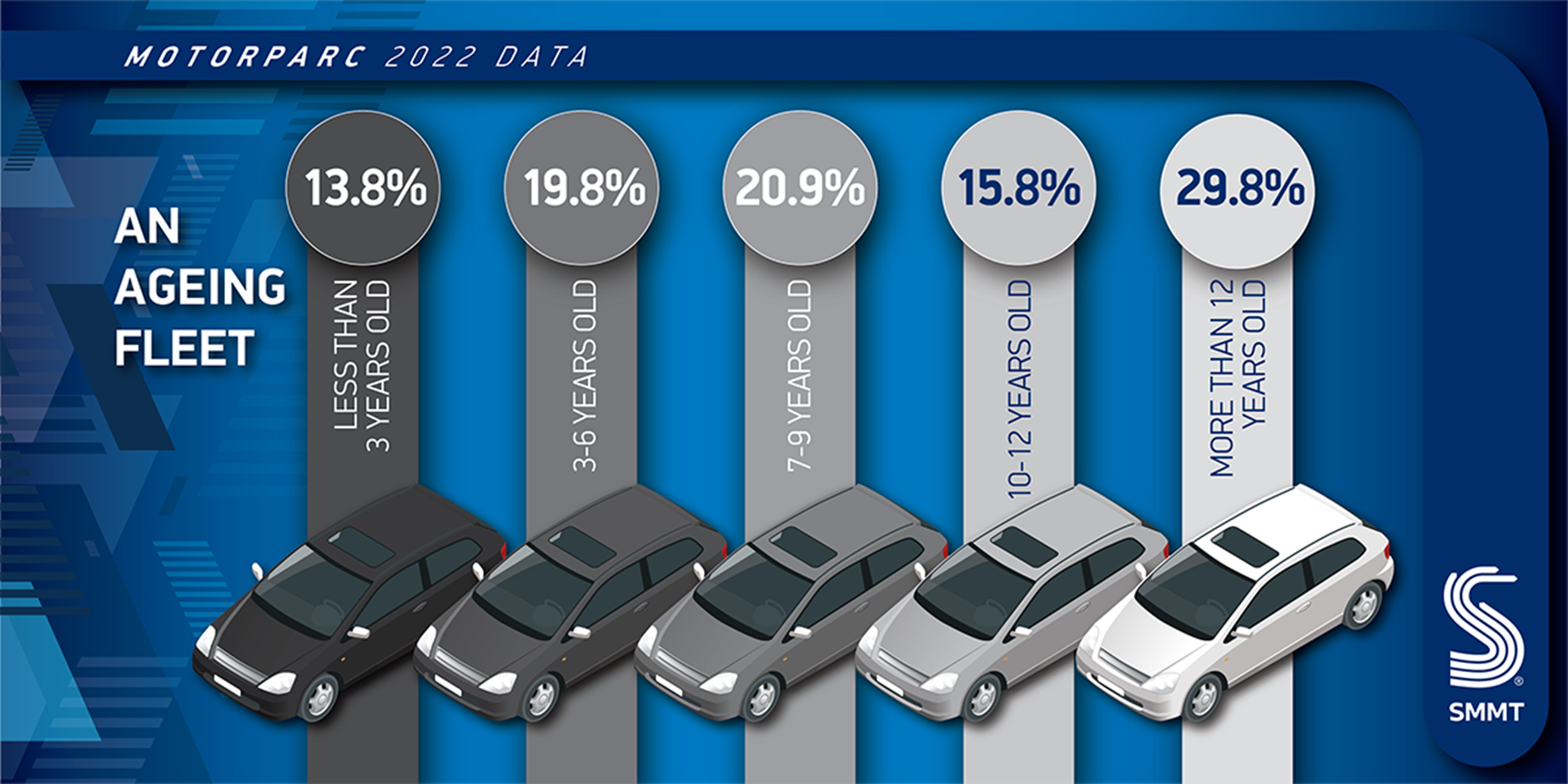Roads get busier
More vehicles on the road and more of them fuelling positive environmental change
Over one million electric cars are now in use on the UK’s roads.
It means that one in every 32 cars now fuels its journeys via a plug. It represents more than a 50% increase in numbers over the last year, and EVs now account for 3.1% of vehicle on the roads according to new figures from the Society of Motor Manufacturers and Traders (SMMT).
On the move
The annual Motorparc data from the SMMT reveals that the number of all cars in use on UK roads in 2022 rose by 124,393 units to 35,148,045.
This represents a rise to levels last seen in 2019, while the overall number of vehicles has risen to a record 40,723,974 units. It is a picture of an improving picture of supply after shortages over the last few years following pandemic lockdowns.
There are now 615,570 trucks and 4,887,593 vans in service, up 1.9% and 1.7% respectively.
Britain’s HGV numbers are also at record levels, while vans make up almost one in eight vehicles in use, the largest proportion ever recorded.

Breathe easier
Increasing numbers of alternatively fuelled vehicles means that average car and van CO2 emissions have fallen by 1.6%.
Ownership of electric commercial vehicles has also risen dramatically.
Electric van numbers are up some 67.3%, while electric bus and coach numbers are up by 34.9%. However, when it comes to trucks, the number of zero emission trucks has almost trebled in a year, but they still account for fewer than one in 600 in use.
While the increasing numbers of zero emission vehicles is a positive drive for the environment, at present it is not considered enough.
Part of the problem is the slow public charge point rollout. This continues to lag behind EV uptake, reports the SMMT, with one standard public charger for every 36 plug-in cars on the road, down from 31 in 2021.
Many existing charge points are not be suitably located or sized to serve van operators. What’s more, there are no dedicated HGV charging points on the UK’s strategic road network at all.
Boosting the switch
Mike Hawes, SMMT chief executive, says “the first growth in car ownership since the pandemic” is a big boost to the country’s automotive sector.
“Better still, we are driving Britain towards a net zero future with more than a million zero emission vehicles now on the road and cutting carbon.
Hawes believes “exciting new technologies and models” are leading the demand for new vehicles. “Now is the time to commit to greater investment in infrastructure and incentives, to speed up a switch to carbon-free mobility that is accessible to all.”

The UK’s most popular cars are superminis and small family (lower medium) models. These account for nearly six in 10 cars in service, at 11,620,116 and 9,214,039 units respectively.
Two in three cars in use are manual transmission, while 67.2% of cars driven in the UK were made in the EU and 15% were built in Britain.
Meanwhile, the average car and van on the road are both nine years old, while the average truck has seen 8.2 years of service.

The most popular car models out on UK’s roads





